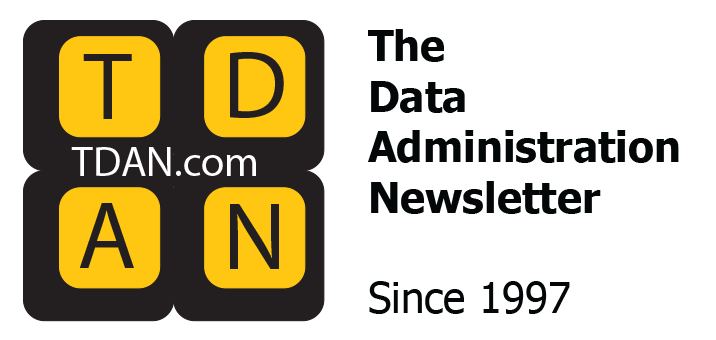
What Is Continuous Delivery?
Continuous delivery (CD) refers to a software engineering approach where teams produce software in short cycles, ensuring that software can be reliably released at any time. Its main goals are to build, test, and release software faster and more frequently. This process typically involves deploying every change to a production-like environment and performing automated testing to ensure quality standards.
CD is also applicable to data pipelines, ensuring that data flows are consistent and reliable. In the traditional waterfall model, software is integrated late, which often leads to challenges in fixing bugs and ensuring quality. CD addresses these issues by automating the deployment pipeline, minimizing manual interventions and potential errors. Refer to this blog post for more background on continuous delivery in the context of software development.
Key Components of Continuous Delivery and How to Adapt Them to Data Pipelines
Here are some of the main components that enable continuous delivery in data pipelines.
Version Control Systems (VCS)
Version control systems are critical for managing changes in codebases, including configurations, scripts, and data schemas. VCS tools like Git enable developers to track changes, manage versions, and collaborate across teams, ensuring everyone is aligned with the latest updates.
This supports data pipelines where multiple team members might work on various configurations and transformations. By using VCS, teams can quickly roll back to previous versions if a recent change leads to an error, maintaining stability. In the context of continuous delivery, VCS aids in manageability and traceability.
Changes pushed to the VCS trigger automated deployment pipelines, leading to more frequent, controlled releases. This reduces the chances of integration issues or conflicting changes. Additionally, version control supports branching strategies for parallel development, enabling teams to work on new features without disturbing the main workflow pipeline.
How to Adapt VCS to Data Pipelines:
- Store pipeline configuration files, DAG definitions, and transformation scripts in version control.
- Track changes to data schemas and metadata alongside code to ensure alignment.
- Use branches and pull requests for feature development, enabling code reviews and integration testing.
- Tag stable versions of pipelines for reproducible deployments and rollbacks.
- Integrate VCS with CI tools to trigger pipeline validations and test runs on commit.
Automated Testing
Automated testing ensures that code changes do not introduce errors. In data pipelines, automated tests can include unit tests for individual data transformation scripts, integration tests for data flow across systems, and validation checks for data quality. Testing automation helps identify issues early in the development process, enabling quicker corrections.
Automated testing frameworks continuously evaluate the health of the pipeline by executing pre-defined test cases whenever a change is made. With automated testing, teams are confident that their data processes function correctly under various scenarios.
How to Adapt Automated Tests to Data Pipelines:
- Write unit tests for individual transformation functions or SQL queries.
- Implement integration tests to validate end-to-end data flow and system interoperability.
- Add data quality checks (e.g., null values, schema validation) as part of test suites.
- Use mocks or synthetic datasets to simulate input data and test edge cases.
- Schedule tests to run automatically on code commits or before deployments.
Build Automation
Build automation simplifies the process of compiling and configuring code for a production environment, ensuring that each build is reproducible and consistent. In data pipelines, build automation involves tasks like constructing data transformation artifacts or generating configuration scripts.
Automated builds eliminate human error in repetitive tasks and create a standardized procedure for deploying changes. By automating the build process, teams can quickly iterate and improve their data workflows. Upon a successful build, automated testing processes are triggered, simplifying the pipeline from code change to deployment.
How to Adapt Build Automation to Data Pipelines:
- Package transformation scripts or notebooks into deployable units using tools like dbt or custom scripts.
- Generate configuration files dynamically based on environment settings.
- Validate pipeline definitions (e.g., Airflow DAGs) during build time to catch syntax or dependency errors.
- Produce documentation or metadata artifacts as part of the build output.
- Chain build steps with testing and linting to ensure consistency and quality.
Deployment Automation
Deployment automation enables the consistent and reliable implementation of applications into production environments. For data pipelines, deployment automation aims to roll out configuration changes, database updates, and transformation scripts without manual intervention.
Automated deployment tools instantly deploy tested code into production, allowing teams to focus more on development and less on orchestration. Such systems use pre-defined workflows that guide deployment tasks, ensuring all dependencies are considered and processes are followed correctly.
How to Adapt Deployment Automation to Data Pipelines:
- Use infrastructure-as-code (IaC) tools to deploy and configure pipeline environments.
- Automate deployment of new pipeline versions using CI/CD pipelines triggered by version control changes.
- Apply environment-specific configurations (e.g., dev, staging, prod) via templates or parameterized deployments.
- Deploy incremental updates to avoid restarting entire workflows unless necessary.
- Validate deployments with post-deployment checks and health probes to confirm operational readiness.
Designing a Continuous Delivery Pipeline for Data
Here are some important considerations for creating a data pipeline with CD.
Pipeline Orchestration
Pipeline orchestration coordinates the execution of various stages in the data delivery workflow, from ingestion and transformation to validation and loading. Orchestration tools help define and manage dependencies between tasks, ensuring that each step runs in the correct order and only when prerequisites are satisfied.
A well-orchestrated pipeline enables reusability, error handling, and scheduling. It also simplifies reruns and backfills when data corrections are necessary. In continuous delivery, orchestration tools integrate with version control and CI/CD systems to automatically trigger workflows when new changes are committed.
Monitoring and Logging
Monitoring and logging are essential for maintaining the health and reliability of data pipelines in a continuous delivery setup. Monitoring provides real-time visibility into pipeline performance, detecting issues like job failures, performance bottlenecks, or delayed data delivery. Metrics such as execution duration, data volumes, and error rates help teams respond to incidents.
Logging complements monitoring by capturing detailed information about each pipeline run, including transformation steps, error messages, and data anomalies. Logs serve as an audit trail, aiding debugging and compliance efforts. Integrating monitoring tools or logging frameworks with the CD pipeline enables automated alerts and dashboards.
Rollback Strategies
Rollback strategies are critical for minimizing risk in continuous delivery pipelines, especially when deployments introduce bugs or data inconsistencies. In data engineering, rollbacks may involve reverting code changes, configuration updates, or even restoring previous datasets to maintain data integrity.
Common rollback methods include versioned deployments, where each release is uniquely tagged and can be redeployed if needed, and blue-green or canary deployments, which test changes in isolated environments before full rollout. For data-specific workflows, teams might store snapshots of datasets or use immutable data stores to enable non-destructive rollbacks.
Continuous Delivery for Data Pipelines: Challenges and Best Practices
Here are some of the main challenges associated with implementing continuous delivery in a data pipeline and how to address them.
1. Data Quality Assurance
Maintaining data quality in continuous delivery pipelines is essential to ensure reliable analytics and downstream processes. Unlike static systems, CD pipelines frequently modify data transformations and ingestion logic, increasing the risk of introducing quality issues such as null values, duplicate records, or inconsistent formatting.
To mitigate this, teams must implement automated data quality checks as part of the CI/CD pipeline. These checks can include:
- Null and uniqueness constraints to ensure required fields are populated and key fields are not duplicated.
- Range and domain checks to validate that values fall within expected bounds or match allowed categories.
- Referential integrity checks to confirm foreign key relationships are preserved across datasets.
- Drift detection to monitor unexpected changes in data distributions or schemas.
Data quality frameworks or custom validation scripts can be triggered as part of the build or test phases. Failed checks should automatically halt the pipeline and generate alerts.
2. Security and Compliance
Security and regulatory compliance are vital concerns in CD for data pipelines, especially when dealing with sensitive personal or financial information. Frequent changes can introduce misconfigurations or vulnerabilities if not properly controlled.
Key Practices Include:
- Secrets management using tools to avoid hardcoding credentials in code or configuration files.
- Fine-grained access controls and role-based permissions to ensure that only authorized personnel can access or modify pipeline components and data.
- Audit logging and traceability for all pipeline actions, including who deployed what, when, and where, which helps meet compliance requirements such as SOC 2, GDPR, and HIPAA.
- Automated security scanning for vulnerabilities in dependencies, misconfigurations in infrastructure, and access policies.
Integrating compliance checks directly into the CI/CD pipeline allows violations to be flagged and resolved before reaching production, ensuring ongoing conformance with organizational and legal standards.
3. Processing Large Data Volumes
High data volumes can overwhelm pipeline components, cause delays, or even result in system crashes. Continuous delivery pipelines must be designed to efficiently process large datasets without sacrificing reliability or performance.
Strategies for Handling Large-Scale Data Include:
- Distributed processing frameworks to parallelize workloads across clusters.
- Batching and micro-batching to divide large datasets into manageable chunks, reducing memory usage and processing time.
- Streaming architectures for near-real-time processing where appropriate, using tools to manage data flow and offset tracking.
- Backpressure mechanisms to control ingestion rates based on downstream capacity, preventing overload.
- Autoscaling and resource quotas in cloud-based environments to dynamically allocate compute and memory based on workload.
Pipeline monitoring should include metrics on throughput, job duration, memory usage, and I/O bottlenecks to identify and address performance degradation as part of routine deployment cycles.
4. Handling Schema Changes
Schema changes are a frequent source of failure in data pipelines. A new deployment that removes or alters a column, for example, can break downstream jobs, dashboards, or machine learning models that rely on the previous schema.
How to Handle Schema Changes Safely:
- Schema versioning allows multiple schema versions to coexist, supporting gradual rollouts and backward compatibility.
- Contract testing validates producer-consumer agreements to ensure changes won’t break downstream systems. Schema registries can enforce these checks.
- Automated validation scripts can compare new schemas to production schemas and block deployments that introduce breaking changes.
- Migration scripts and rollback plans should be stored in version control and tested as part of the CD pipeline, ensuring safe transitions between schema versions.
- Schema evolution policies (e.g., add-only changes or deprecation cycles) should be adopted to prevent disruptive modifications.
Testing schema changes in staging environments or using blue-green deployments can further minimize risk before applying updates to production systems.
5. Toolchain Compatibility
Continuous delivery for data pipelines often involves integrating a wide range of tools: source control systems, CI/CD platforms, data orchestration frameworks, data processing engines, monitoring services, and more. Ensuring that all these tools work together is critical for stability and maintainability.
To Manage Toolchain Compatibility:
- Use standardized interfaces and formats, such as REST APIs, JSON/YAML configs, and Docker containers, to enable communication between tools.
- Containerization and infrastructure-as-code (IaC) enable consistent environments across development, testing, and production, reducing integration issues.
- Dependency management should track versions of all tools and libraries and include compatibility checks in the build process.
- CI/CD orchestration tools should be configured to handle versioned jobs, conditional logic, and retries to support diverse workflows.
- Regular integration testing across the full toolchain ensures that upgrades or changes to any component don’t introduce regressions or break dependencies.
Maintaining modular, decoupled pipeline components with clear interfaces makes it easier to swap or upgrade tools over time without disrupting the broader delivery pipeline.
